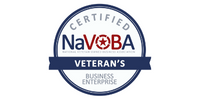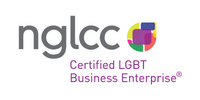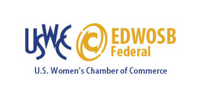Over 79% of new employees have stated that diversity is essential in choosing or staying with a new job or company. The next generation of employees, Gen Z, identifies as 60% diverse and will demand an inclusive culture with diverse teams.
Although there are many steps to creating a diverse, equitable, and inclusive company, bringing in more diverse employees is the first step.
A successful diverse workforce should include more than just race but also diverse gender, sexuality, people with disabilities, thought, and experience.
Hiring managers tend to hire people that are comfortable with them who might have shared interests, education, thought processes, and social activities.
We all have unconscious biases that can impact our first impressions. It is possible to mitigate unconscious bias through new processes or practices. For example, in the 1970s a large majority of US symphony orchestras revised their hiring practices to “blind” auditions where screens were used to conceal the identity and gender of each musician with a jury panel. This one action quadrupled gender diversity over the next several years by hiring the best musician without unconscious bias.
Mitigating bias and improving diversity hiring will require new interview processes.
Create Open-Ended Job Descriptions
Sit down with the hiring manager and human resources to determine the skills and experience needed for an open job position.
When writing the job description, remove gender language such as “competitive” for men or “collaborative” for women. It could affect your job pool and bring less diversity to the table as women or men may not apply for jobs that do not sound like a fit based on the job description. There are software programs that can replace neutral words to have your job description and job posting more neutral for all candidates.
Less is better, women will be less likely to apply for a position unless they have 100% of the skills needed, but men will apply if they have 70% of the skills required. The goal is to get as many qualified candidates as possible.
Blind Resumes
Remove all race, age, or gender indications from the resume before presenting it to the hiring team. This includes names, years of employment or school, organizations such as the black student council, or addresses. Your hiring team should grade the resume blindly before meeting the candidate.
Multiple studies have shown that bias in reviewing resumes is expected due to unconscious bias. A September 2016 article about the two-year study in Administrative Science Quarterly called Whitened Resumes: Race and Self-Presentation in the Labor Market (pdf).
If a person of color candidate “whitened” their resume” by removing reference to race through name, education, address, or organizations. They would be twice as likely to get a callback.
Another study from the University of Pennsylvania’s Wharton School, evaluating college graduates, “On average, a female or minority candidate with a 4.0 GPA received the same job candidate rating as a white man with a 3.75 GPA.”
Sample Work Test or Skills Assessment
Each candidate should complete the same skills or work assessment before the panel interview. The assessment is directly related to the job needs. Questions such as a brief description of how they would handle a problem, analyze a data set, or write a piece of code.
The assessment should be short and directly related to the job skills or needs. The assessment should be graded blindly by the hiring team or panel before they meet the candidate.
Panel Interviews
Panel interviews are critical for a multitude of reasons. They are more efficient for candidates and teams than multiple one-on-one interviews. In today’s climate, you do not want to delay and lose a great candidate while scheduling numerous interviews over a long period.
You will also get the candidate to interact with the entire team and various people. This will help the hiring team see the candidates’ ability to adapt to different team members and the candidate to know the culture and personality of the group.
Panel interviews reduce unconscious bias. The panel should ideally be diverse team members of gender, race, age, and workgroups to reach a consensus before making a hiring decision. The panel should bring different styles, experiences, and thought processes.
Unconscious bias training will help panelists understand the different presentation styles of different genders, races, and ages. For example, according to Hard Business Review, men are better at self-promotion, with men rating their performance 33% higher than equally performing women.
Each panelist should have a standardized interview sheet for grading and note-taking. Based on the job description, create a questionnaire of “skill-based” questions with standard rubrics and suggested grading should be established before interviewing. The candidate’s resume and testing should have been graded before the panel meets with the candidate.
Mitigate the Likability Factor
We will often hear hiring managers say, “I hire with my gut.” But engaging with your gut is usually your own bias disguised as intuition. This can occur when interviews occur one-on-one instead of panels. We all have unconscious bias, which precludes us from hiring the people we “like” and perceiving them as the best candidate for the job.
Another statement we will say or hear is the candidate is “not a fit.”
This can be code for bias, whether conscious or unconscious. The job description must be transparent on what hard and soft skills are needed to mitigate good candidates. The team must also clearly define culture and what skills or personalities would fit in.
For example, if the company culture is very casual and not structured, such as a new IT firm compared to a manufactory plant where rigidity and structure are necessary. These cultures should be clearly defined so that you hire the right candidates for that specific culture.
But remember that different styles can bring innovation and productivity to a team. If you always hire the same personalities and thinking styles, it will limit original ideas and problem-solving.
Set Target for a Diverse Candidate Pool in the Panel Interview Process
You will always get the same candidates if you rely on the same recruiting sites, methods, or resources that you have always utilized. Look outside the box. If you want to grow your divisive pool, ask for references from your current diverse workforce.
Always Examine Everything Your Candidates Have to Offer
Lastly, look at the whole picture of each candidate: resume, reference, skills assessment, trait/leadership assessment, panel interview scores, and notes. Do not limit candidates by only looking at experience or education, instead look at skills that can be applied. Looking for potential is critical in this new job market.
Increase Quality Diversity Hires with DEI Recruiting and Consulting
If your small to medium-sized business is prepared to make a change for the better in its hiring process, the team at DEI Recruiting and Consulting can help you find qualified diversity candidates for your essential positions.
Contact us today to learn more about our recruiting services and our training possibilities for improved diversity retention.





